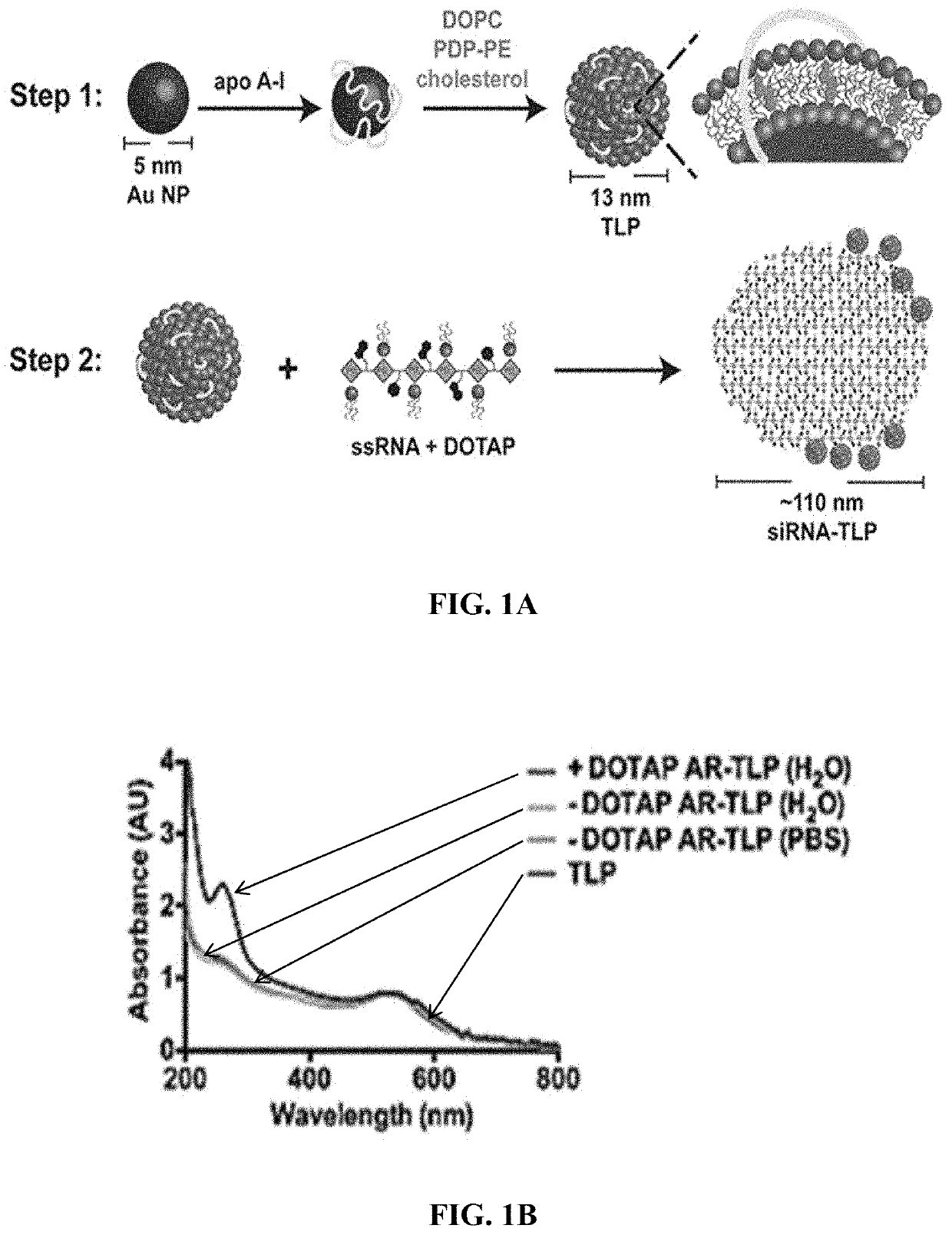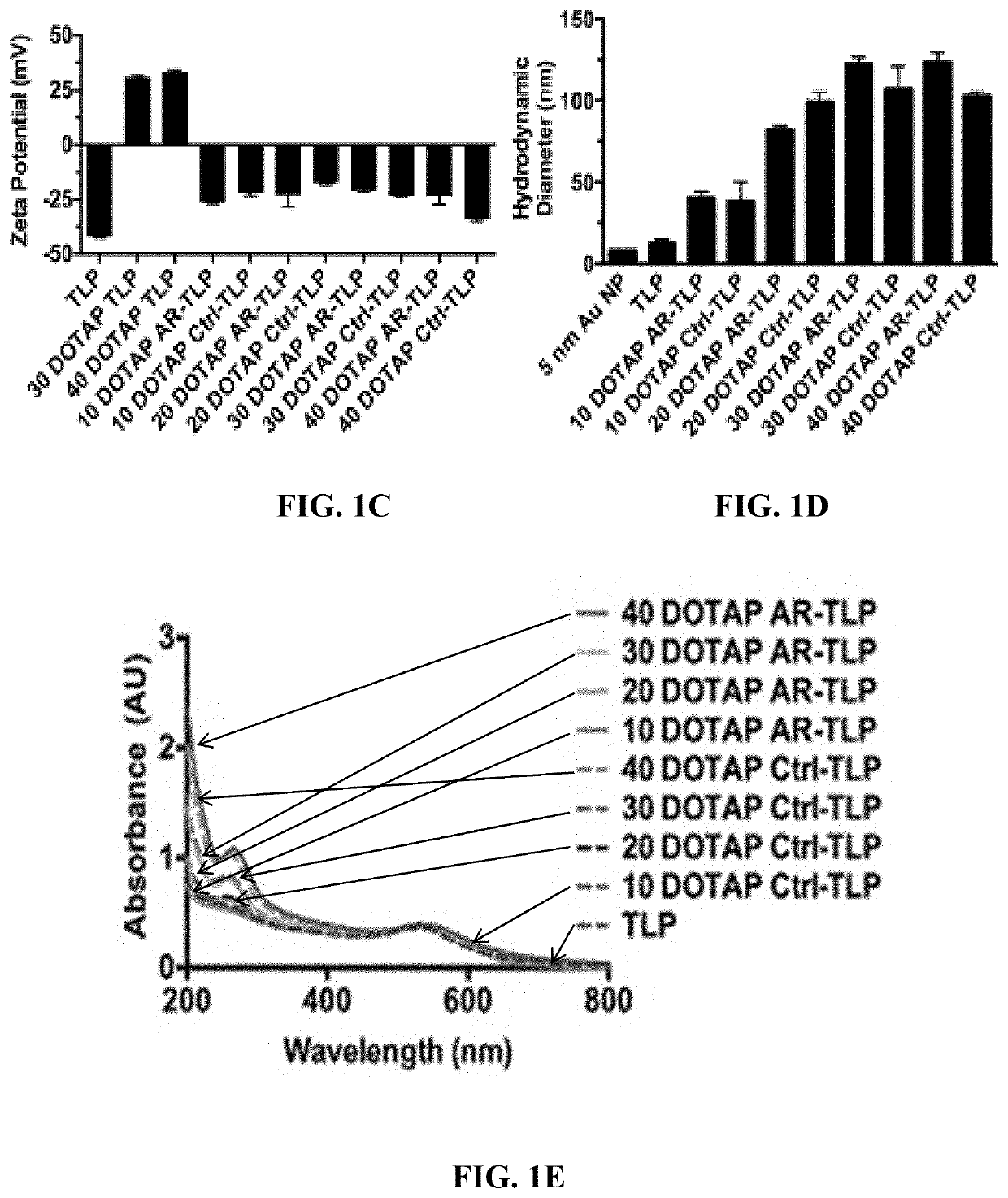Short interfering RNA templated lipoprotein particles (siRNA-TLP)
a lipoprotein and short-interfering technology, applied in the direction of powder delivery, pharmaceutical non-active ingredients, pharmaceutical delivery mechanisms, etc., can solve the problems of complex structure, ineffective active, and difficult targeted systemic delivery of sirna
- Summary
- Abstract
- Description
- Claims
- Application Information
AI Technical Summary
Benefits of technology
Problems solved by technology
Method used
Image
Examples
example 1
mbly of Single-Strand Complements of siRNA, Lipids, and Bio-Inspired Nanoparticles Yields Anionic Vehicles for Active siRNA Delivery
[0172]There is significant interest in developing synthetic mimics of natural RNA delivery vehicles.8 In particular, high-density lipoproteins (HDL) are appealing because they naturally bind endogenous RNAs, like microRNA, stabilize the single-stranded RNA (ssRNA) to nuclease degradation, and deliver them to target cells to regulate gene expression.12,13 HDL-mediated delivery of RNA is dependent upon target cell expression of scavenger receptor type B-1 (SR-B1), the high-affinity receptor for mature spherical HDLs, such as the mature HDLs that have apolipoprotein A-I (apoA-I) on their surface.12,14,15 In addition to HDL, SR-B1 binds anionic particulate ligands in a wide variety of sizes.16-18 HDLs appear to overcome hurdles to successful systemic delivery of RNA to target cells that express SR-B1. These data have motivated the development of synthetic m...
PUM
| Property | Measurement | Unit |
|---|---|---|
| diameter | aaaaa | aaaaa |
| Hydrodynamic diameter | aaaaa | aaaaa |
| treatment time | aaaaa | aaaaa |
Abstract
Description
Claims
Application Information
 Login to View More
Login to View More - R&D
- Intellectual Property
- Life Sciences
- Materials
- Tech Scout
- Unparalleled Data Quality
- Higher Quality Content
- 60% Fewer Hallucinations
Browse by: Latest US Patents, China's latest patents, Technical Efficacy Thesaurus, Application Domain, Technology Topic, Popular Technical Reports.
© 2025 PatSnap. All rights reserved.Legal|Privacy policy|Modern Slavery Act Transparency Statement|Sitemap|About US| Contact US: help@patsnap.com



